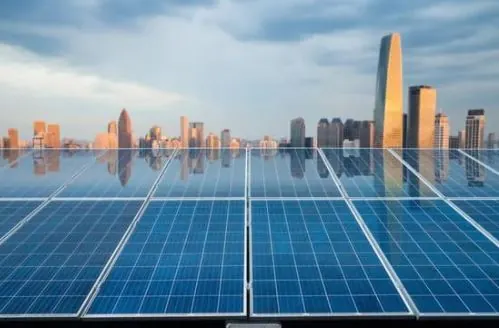2025 Federal budget includes investment in infrastructure, mining and energy

On November 4, 2025 (Budget Day), the Government of Canada announced Budget 2025 – Canada Strong. Budget 2025 proposes several measures that, if passed, will impact infrastructure, energy and mining.
Infrastructure
In Budget 2025, the Federal Government announced a $115-billion investment over five years to build major infrastructure for the 21st century. The $115-billion investment is broken down into:
- $5 billion to trade and transport infrastructure
- $19 billion to Indigenous communities and municipal infrastructure
- $37 billion to other infrastructure and assets (e.g. health, innovation)
- $54 billion to core public infrastructure (e.g. water/wastewater, transit)
The 2025 Budget delivers on a commitment made under the Building Canada Act to launch a Federal Government Major Projects Office (MPO). The MPO is to serve as a single point of contact to get nation-building projects built. The first major nation-building projects, which were previously announced by the Prime Minister in September 2025, are confirmed in the 2025 Budget:
- LNG Canada Phase 2, Kitimat, British Columbia
- Darlington New Nuclear Project, Bowmanville, Ontario
- Contrecoeur Terminal Container Project, Contrecoeur, Québec
- McIlvenna Bay Foran Copper Mine Project, East-Central Saskatchewan
- Red Chris Mine expansion, Northwest British Columbia
The Federal Government also indicated the development and advancement of several strategies and earlier stage projects that could help to transform Canada, including the following:
- Critical Minerals Strategy
- Wind West Atlantic Energy
- Pathways Plus
- Arctic Economic and Security Corridor
- Port of Churchill Plus
- Alto High-Speed Rail
Budget 2025 proposes to provide $213.8 million over five years to the MPO as well as $10.1 million over three years to Crown-Indigenous Relations and Northern Affairs Canada to continue leading the Federal Initiative on Consultation to support consultation on national interest projects.
Mining and Energy
Budget 2025 announces several other funding or legislative changes that will be important for the mining and energy sectors, including, without limitation, the following:
- Critical Minerals Sovereign Fund – The budget proposes providing $2 billion starting in 2026–27 to Natural Resources Canada to create the Critical Minerals Sovereign Fund, which would make strategic investments in critical minerals projects and companies.
- Arctic Infrastructure Fund – $1 billion is proposed to be allocated over four years, starting in 2025–26, to Transport Canada to establish the Arctic Infrastructure Fund. This fund would invest in major transportation projects in the North, benefiting both civilian and military applications, including airports, seaports, all-season roads and highways. The investments would aim to strengthen Canadian sovereignty, support economic development and job creation in Northern communities, advance Indigenous economic reconciliation and promote trade diversification by opening new gateways to global markets.
- Innovative Processing Technologies and Security – $443.0 million over five years, starting in 2025–26, would go to Natural Resources Canada and Innovation, Science and Economic Development Canada to support the development of innovative critical minerals processing technologies, joint investments with allies in Canadian critical minerals projects and the creation of a critical minerals stockpiling mechanism to bolster Canadian and allied national security.
- First and Last Mile Fund – The budget includes $371.8 million over four years, starting in 2026–27, for Natural Resources Canada to launch the First and Last Mile Fund. This new fund would support the development of critical minerals projects and supply chains at the upstream and midstream segments, focusing on bringing near-term projects into production. It would absorb the Critical Minerals Infrastructure Fund and leverage its existing funding envelope to provide up to $1.5 billion in support through 2029–30, continuing to support clean energy and transportation infrastructure connected to critical minerals development.
- Clean Technology Demonstration Expansion – $39.9 million over four years, beginning in 2026–27, and $11.1 million ongoing would be provided to the National Research Council of Canada’s Industrial Research Assistance Program to expand the Clean Technology Demonstration initiative into global markets.
- Canada Infrastructure Bank Appropriation Increase – The Canada Infrastructure Bank Act would be amended to raise the statutory appropriation limit from $35 billion to $45 billion.
- Productivity Super-Deduction – A new set of enhanced tax incentives would be introduced, allowing businesses to immediately write off a larger share of the cost of all new capital investments.
- Immediate Expensing for Manufacturing and Processing Buildings – Buildings acquired on or after Budget Day and used for manufacturing or processing before 2030 would be eligible for immediate expensing. This measure would be phased out between 2030 and 2033.
- Extension of CCUS Investment Tax Credit – The availability of full credit rates for the Carbon Capture, Utilization and Storage (CCUS) investment tax credit would be extended by five years, applying from 2031 to 2035. Credit rates would remain unchanged from 2036 to 2040.
- Expansion of Critical Mineral Exploration Tax Credit (CMETC) – Eligibility for the CMETC would be broadened to include 12 additional critical minerals essential for defence, semiconductors, energy and clean technologies: bismuth, cesium, chromium, fluorspar, germanium, indium, manganese, molybdenum, niobium, tantalum, tin and tungsten. The expanded credit applies to certain exploration expenditures targeted at these minerals and renounced as part of a flow-through share agreement entered into after Budget Day and on or before March 31, 2027.
- Advancement of the Clean Electricity Investment Tax Credit (ITC) – The budget proposes legislation to finalize the Clean Economy ITCs, including a Clean Electricity ITC that may be available to renewable energy investors, including municipal and Indigenous corporations, to encourage growth in renewables and support infrastructure, such as transmission buildouts.
- Climate Competitiveness Strategy – Budget 2025 puts forth a new Climate Competitiveness Strategy, which includes a commitment to strengthen national GHG accounting and pricing to provide long‑term policy certainty for investors.
- Clean Technology Manufacturing Tax Credit Expansion – Antimony, indium, gallium, germanium and scandium would be added to the list of critical minerals eligible for the Clean Technology Manufacturing investment tax credit.
- Nuclear Energy Exports Promotion – $4.2 million over three years starting in 2027–28, and $1.4 million ongoing, would be allocated to Natural Resources Canada to maintain capacity for promoting nuclear energy exports and strategic engagement in key export markets.
- Export Development Canada Expansion – Export Development Canada’s total business facilitation would increase by $25 billion by 2030, supporting expanded exports and trade development in strategic sectors including critical minerals, energy, clean technology, infrastructure and defence.
For more guidance on how Budget 2025 impacts you and your infrastructure, energy, and mining projects, the MLT Aikins energy or mining and natural resources teams would be happy to hear from you. As one of Western Canada’s pre-eminent law firms in both the energy and mining sectors, our lawyers provide deep business insight based on extensive domestic and international experience.
Note: This article is of a general nature only and is not exhaustive of all possible legal rights or remedies. In addition, laws may change over time and should be interpreted only in the context of particular circumstances such that these materials are not intended to be relied upon or taken as legal advice or opinion. Readers should consult a legal professional for specific advice in any particular situation.









